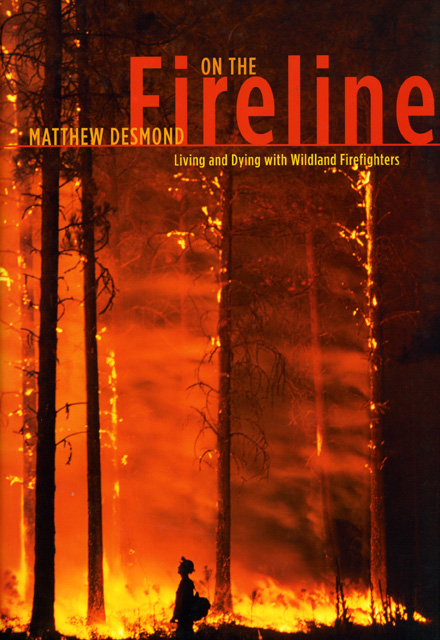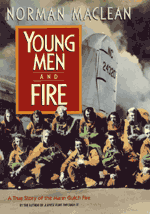Wildfire and the Literary Imagination
The wildfires in Southern California, which began last week and have yet to be brought under control, now cover 140,000 acres (and can be seen from space). Firefighters continue today to battle the blaze, which comes as California is seized by a budget crisis so severe the governor is putting state property up for sale. (On a local note, the historic Mt. Wilson Observatory, which was once in the path of the flames, seems out of harm’s way for the moment. The iconic structure was designed by Daniel Burnham, who also happened to plan our fair city. Burnham’s plan of Chicago turns 150 this year, and our book The Plan of Chicago: Daniel Burnham and the Remaking of the American City is the current pick for the One Book, One Chicago program.)
Though wildfires grab headlines, the men and women who work tirelessly to fight them are often overlooked. The dangerous profession—two firefighters have already perished in the California blazes—makes for fascinating reading, and it has been the subject of two University of Chicago Press books.
 Burning to death is a hellish way to die. Yet every year men and women across the country risk their lives for low pay to fight forest fires. Living in remote encampments and isolated from their friends and family, these firefighters stand ready to chase smoke at a moment’s notice. And when a fire does break out, they face a chaotic inferno armed with hand tools, hard hats, and little else. So what motivates them to put their lives on the line and face heat so intense it can melt steel?
Burning to death is a hellish way to die. Yet every year men and women across the country risk their lives for low pay to fight forest fires. Living in remote encampments and isolated from their friends and family, these firefighters stand ready to chase smoke at a moment’s notice. And when a fire does break out, they face a chaotic inferno armed with hand tools, hard hats, and little else. So what motivates them to put their lives on the line and face heat so intense it can melt steel?
In this rugged account of a rugged profession, Matthew Desmond explores the heart and soul of the wildland firefighter. Having joined a firecrew in Northern Arizona as a young man, Desmond relates his experiences with intimate knowledge and native ease, adroitly balancing emotion with analysis, action with insight. On the Fireline shows that these firefighters aren’t the adrenaline junkies or romantic heroes they’re so often portrayed as. Their choice to take on such hazardous work grows naturally from the values of their rural, working-class upbringing. And the Forest Service cannily taps into—indeed, relies upon—their background as it conditions them to risk their lives and stay calm in the face of danger. Along with exploring how firefighters become acclimated to the hazards of the job, On the Fireline candidly examines the more everyday facets of their lives as well—we hear their jokes, witness their fights, and observe the close bonds they form while waiting for the next alarm to sound.
Matthew Desmond’s revealing and often gripping book is truly one of a kind: an immersion into a dangerous world, a moving portrait of the lives of young people, a sophisticated analysis of a high-risk profession—and a captivating read. Read an excerpt here.
 Sixty years ago last month, a crew of fifteen of the Forest Service’s elite airborne firefighters, the Smokejumpers, stepped into the sky above a remote forest fire in the Montana wilderness. Two hours after their jump, all but three of these men were dead or mortally burned.
Sixty years ago last month, a crew of fifteen of the Forest Service’s elite airborne firefighters, the Smokejumpers, stepped into the sky above a remote forest fire in the Montana wilderness. Two hours after their jump, all but three of these men were dead or mortally burned.
Norman Maclean, best known for authoring the classic A River Runs Through It, spent the final years of his life researching the story of the fire, which for him exemplified a moment when “life takes on the shape of art,” whose “remembered remnants… are largely what we come to mean by life and become almost all of what we remember of ourselves.” The result is Young Men and Fire, a book which the New York Times Book Review called “a magnificent drama of writing, a tragedy that pays tribute to the dead and offers rescue to the living.” For more, you can visit a website dedicated to Maclean, read an excerpt from the book, and hear Smokejumper Bob Sallee tell the story of the fire.